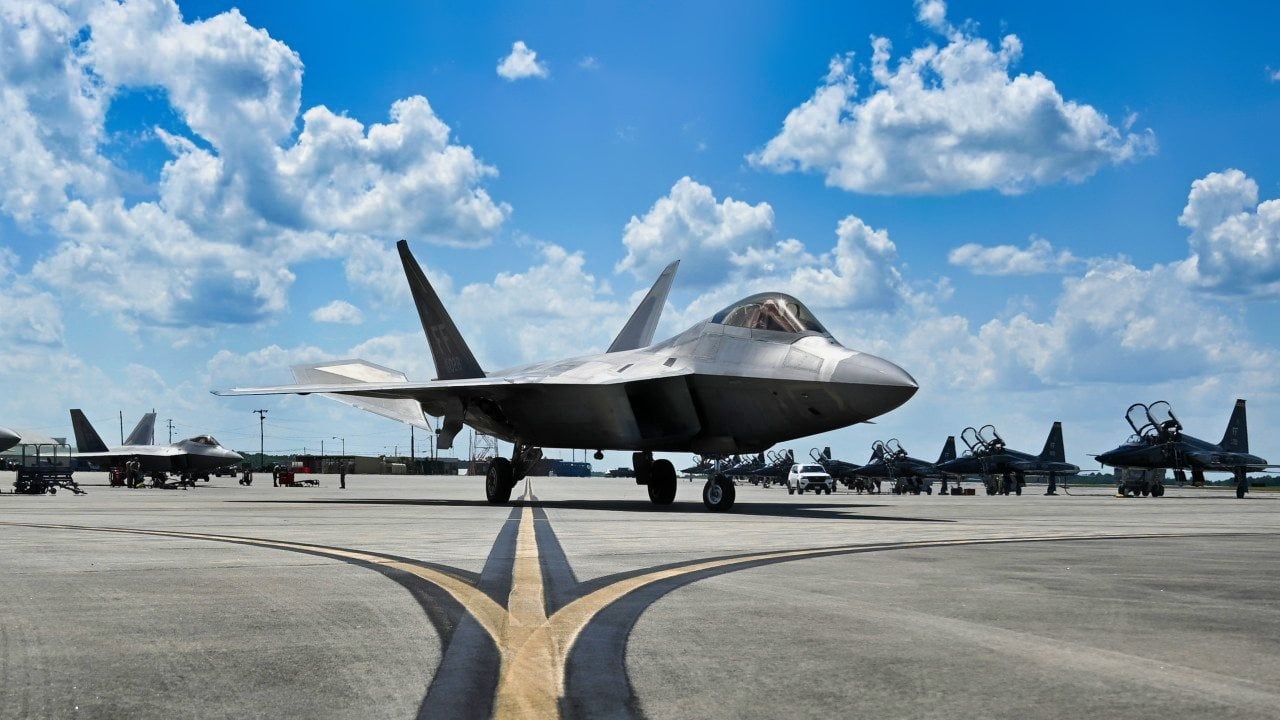Summary and Key Points: The B-52 Stratofortress, designed in 1948 and first flown in 1952, has been a cornerstone of U.S. military power for decades. Despite its age, the B-52 remains a highly effective strategic bomber, having participated in every major U.S. conflict since Vietnam.
-Its durability and adaptability, with upgrades over the years, have kept it relevant.
Why Some in the Air Force Might Not Like the Old B-52: The success of the B-52 contrasts with the challenges and inefficiencies seen in modern military acquisitions, like the F-22 program, highlighting the value of simplicity and reliability in military design.
Why the B-52 Stratofortress Still Dominates U.S. Air Power After 70 Years
The B-52 Stratofortress was designed in 1948, and it flew for the first time in 1952. The Stratofortress was designed to be jet-powered, rather than propeller-driven – a necessary evolution in the design for long-range bombers. Planned for long-distance bombing, the Boeing-built behemoth could fly at extraordinary altitudes and deliver a remarkable amount of ordnance over targets.
These bombers were used to flying without fighter escorts. In fact, they were designed to fly solo – something the propeller-driven bombers of the Second World War were not accustomed to doing, although they did so, at great peril to their crews, when the mission called for it.
The B-52 Stratofortress: A Storied Legacy
The Boeing B-52 bomber has flown in every post-World War II conflict that the United States has fought. It was an especially useful asset during the Vietnam War, when the United States dropped more bombs than it did in WWII. The B-52 delivered some of the biggest wallops to North Vietnamese targets.
Whether it be threatening to rain down nuclear hellfire upon the Soviet Union at the height of the Cold War, blasting North Vietnamese formations, or annihilating ISIS fighters in the 2000s, the B-52 has consistently proven itself to be the most successful bomber in American history. It is quite possibly the longest-serving and most successful bomber in all of aviation history.
Powered by eight Pratt & Whitney TF33-P-3/103 turbofan engines and carrying a 70,000-pound payload (these beauties can also fire air-launched cruise missiles), the B-52 Stratofortress was responsible for roughly 40 percent of all ordnance dropped over targets in Desert Storm. During Operation Iraqi Freedom, B-52Hs fired 100 CALCMs on one night mission in March 2003.
This bomber lacks the fancy stealth capabilities that many modern American bombers and fighters possess, but it does have advanced targeting pods, electro-optical viewing sensors, and a forward-looking infrared system that help improve its lethality (and better protect its crew of five from threats).
It cannot fly at supersonic speeds, but it does fly at 50,000 feet, and it can even help the U.S. Navy with anti-ship and mine-laying missions.
More than anything, the B-52 is durable. With just a few augmentations to the plane here and there each generation, the B-52 flies on, and it will continue to fly until it just about reaches its centennial.
Think about that. The B-52 Stratofortress was designed and deployed at a time when Harry S. Truman was president. Yet it remains the primary strategic bomber of the U.S. Air Force to this day.
That’s an incredible feat.
Signs of a Broken Acquisitions System
The Stratofortress’ success speaks to the efficiency and reliability of the Pentagon’s early acquisitions system. For triple the price of the B-52 program, the Air Force spent much time and tax dollars building the F-22 Raptor. Billed as a fifth-generation warplane that would demonstrate unparalleled air superiority over its near-peer adversaries, barely a fraction of the planned warplanes were built – over cost and over time – before politicians canceled the program.

Without ever having reached its full potential, the F-22 is already slated to be retired over the next few years, with the Air Force spending even more tax dollars on developing its replacement.
So, as the Air Force develops and deploys a possible sixth-generation warplane, the B-52 Stratofortress from 1948 will still be flying high, dropping bombs on America’s foes, and maintaining its low overhead costs. There are no fancy systems on the bomber. No kitschy computer doodads that jack up the cost and delay production, as most Air Force warplanes today experience. It’s just old-fashioned, high-altitude flying. And these beasts have yet to be stymied by the kinds of air defenses that many major powers are deploying against U.S. air power.
Affordable, efficient, and effective over the course of decades. This is not how most people view military equipment. Defense contractors rarely produce such engineering marvels. And the Defense Department seems almost preternaturally incapable of asking for simple weapons systems that are affordable and relatively easy to maintain.
Everything is complex, expensive, and so technical that losing one unit in combat could be catastrophic for any war effort, given the time it takes to build a replacement and train up new personnel to operate that system. The B-52 is the exception to that rule. As such, the Pentagon’s acquisitions experts must study this program with greater curiosity and attempt to figure out how they can apply the lessons of building and maintaining the B-52 to next-generation combat systems.
Author Experience and Expertise: Brandon J. Weichert
Brandon J. Weichert, a National Interest national security analyst, is a former Congressional staffer and geopolitical analyst who is a contributor at The Washington Times, the Asia Times, and The-Pipeline. He is the author of Winning Space: How America Remains a Superpower, Biohacked: China’s Race to Control Life, and The Shadow War: Iran’s Quest for Supremacy. His next book, A Disaster of Our Own Making: How the West Lost Ukraine, is due October 22 from Encounter Books. Weichert can be followed via Twitter @WeTheBrandon.
All images are Creative Commons or Shutterstock.
From the Vault
Russia Freaked Out: Why the U.S. Navy ‘Unretired’ the Iowa-Class Battleships
Battleship vs. Battlecruiser: Iowa-Class vs. Russia’s Kirov-Class (Who Wins?)
